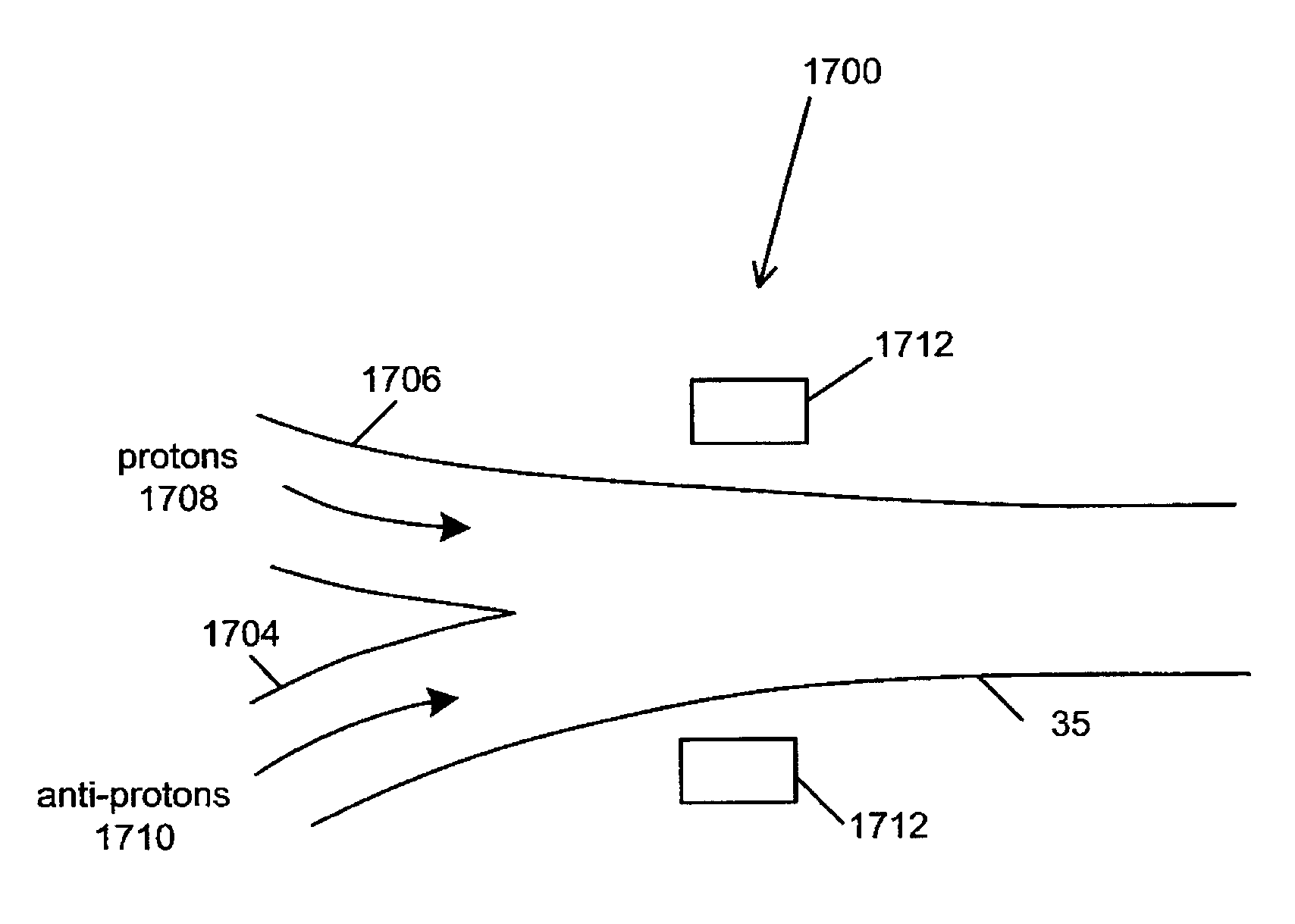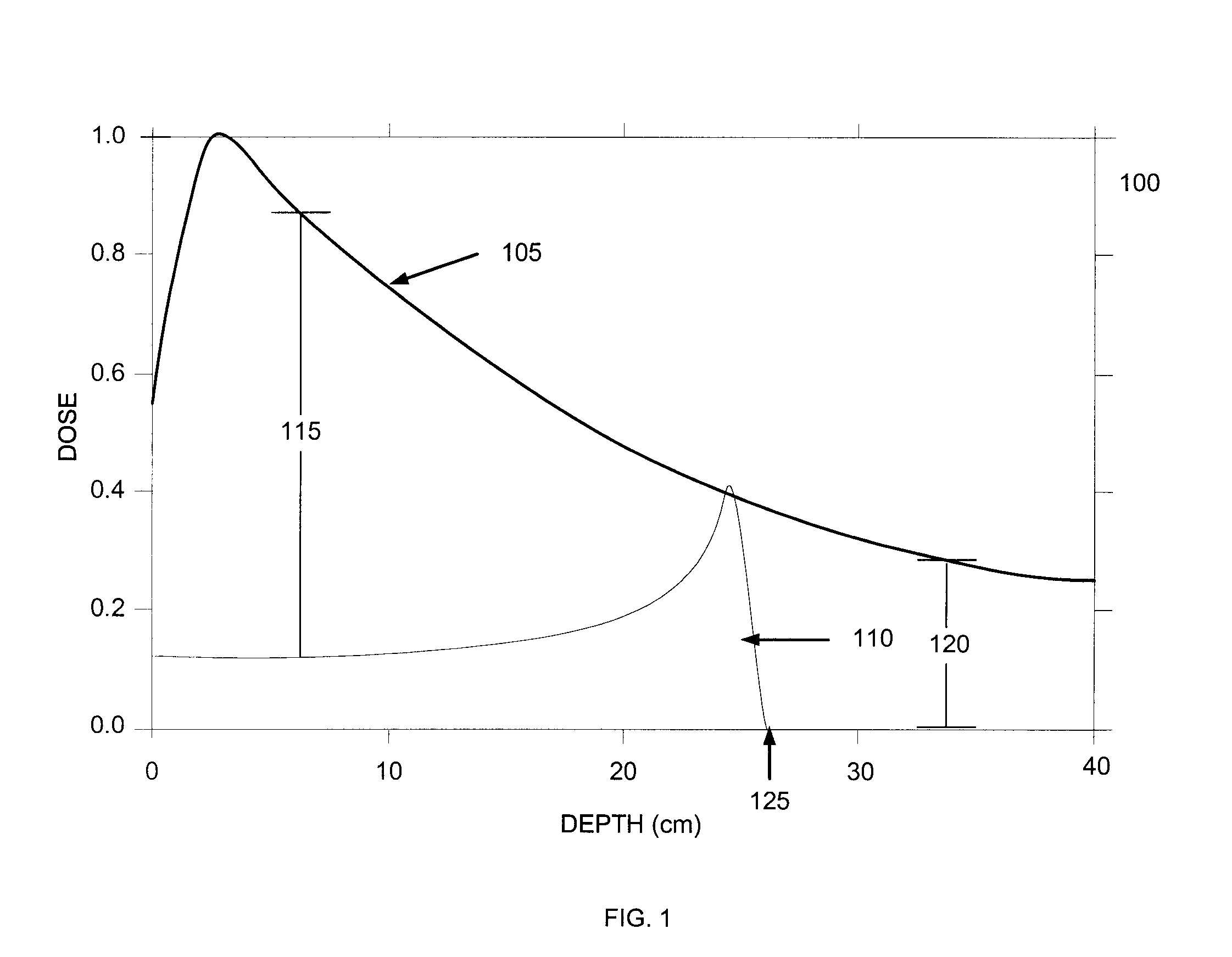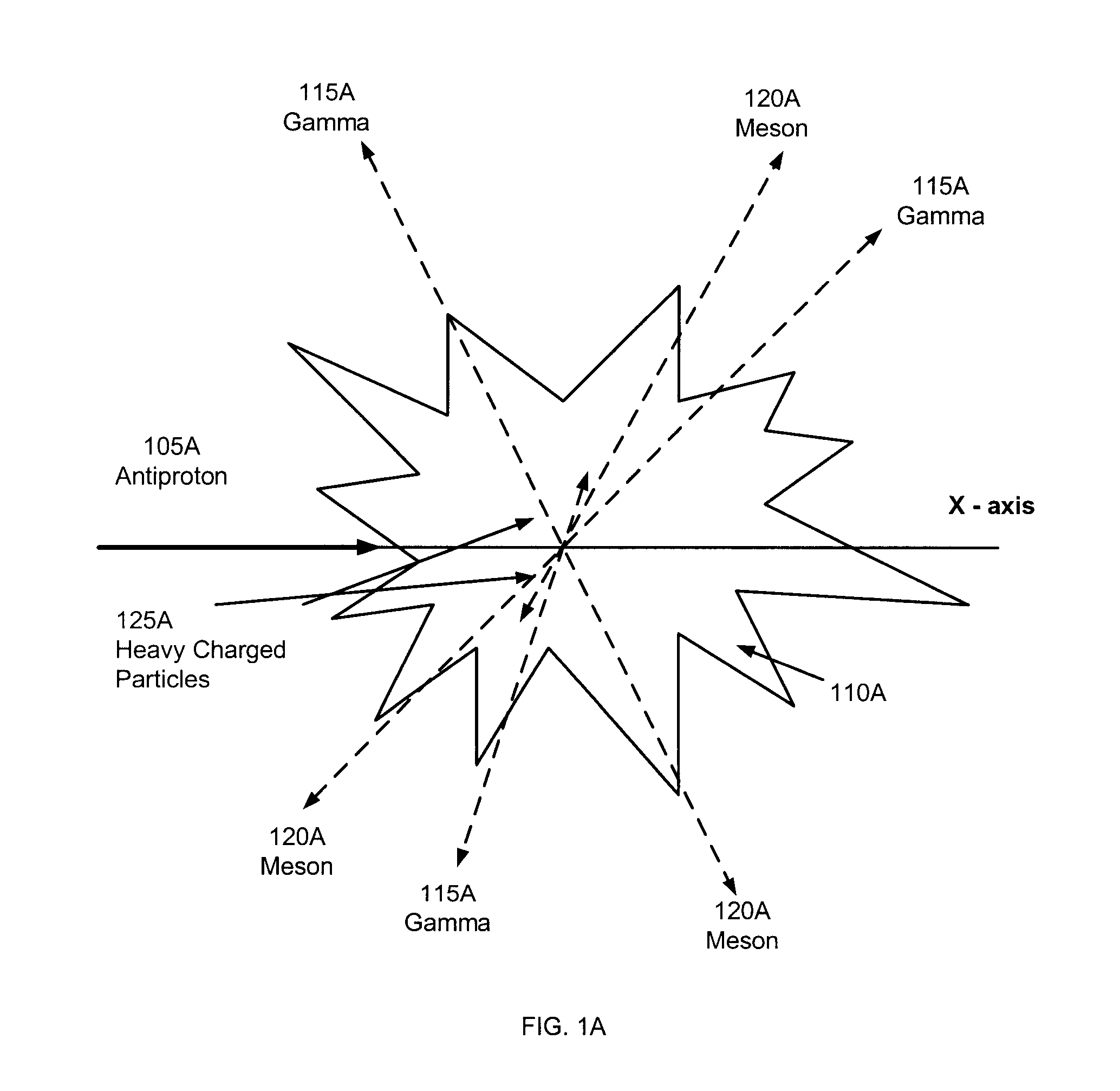Bi-polar treatment facility for treating target cells with both positive and negative ions
a treatment facility and positive ion technology, applied in the direction of optical radiation measurement, x-ray tube, particle separator tube, etc., can solve the problems of killing the animal host, abnormal and deadly formation of cancer cells, tumor spread,
- Summary
- Abstract
- Description
- Claims
- Application Information
AI Technical Summary
Benefits of technology
Problems solved by technology
Method used
Image
Examples
Embodiment Construction
.”
BRIEF DESCRIPTION OF THE DRAWINGS
[0024]Features, aspects, and embodiments of the inventions are described in conjunction with the attached drawings, in which:
[0025]FIG. 1 is a graph illustrating the energy deposition as compared to depth for conventional radiation therapies;
[0026]FIG. 1a is a diagram illustrating a typical antiproton annihilation event;
[0027]FIG. 2 is a graph illustrating the energy deposition as compared to depth for conventional radiation therapies as compared to antiproton therapy performed in accordance with one embodiment;
[0028]FIG. 3 is a flowchart illustrating an example method for performing antiproton therapy in accordance with one embodiment;
[0029]FIG. 4 is a flowchart illustrating an example method for performing antiproton therapy in accordance with another embodiment;
[0030]FIG. 5 is a diagram illustrating an example antiproton production facility;
[0031]FIG. 6 is a diagram illustrating antiproton generation using the facility of FIG. 5;
[0032]FIG. 7 is ...
PUM
 Login to View More
Login to View More Abstract
Description
Claims
Application Information
 Login to View More
Login to View More - R&D
- Intellectual Property
- Life Sciences
- Materials
- Tech Scout
- Unparalleled Data Quality
- Higher Quality Content
- 60% Fewer Hallucinations
Browse by: Latest US Patents, China's latest patents, Technical Efficacy Thesaurus, Application Domain, Technology Topic, Popular Technical Reports.
© 2025 PatSnap. All rights reserved.Legal|Privacy policy|Modern Slavery Act Transparency Statement|Sitemap|About US| Contact US: help@patsnap.com



